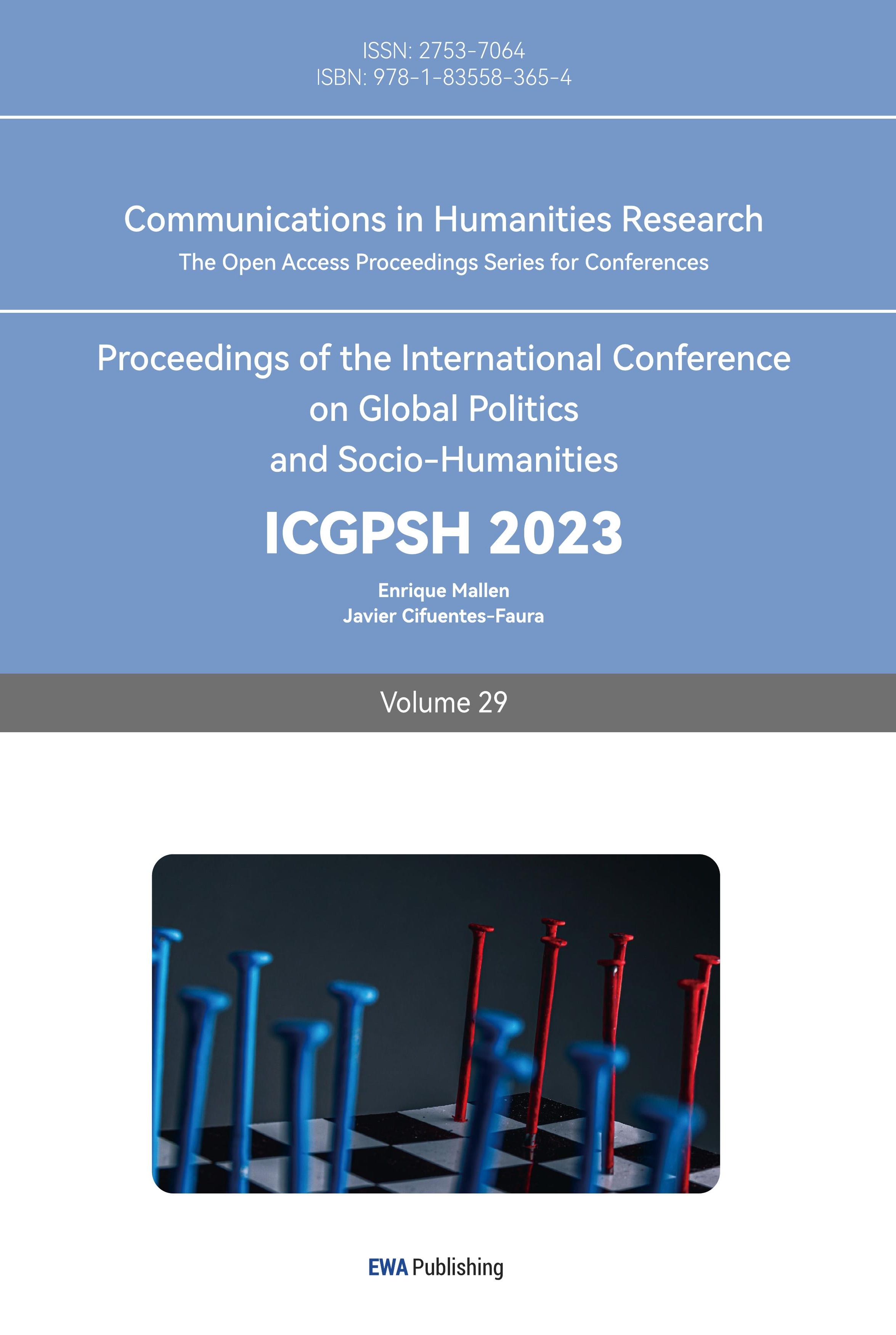1.Introduction
After the two World Wars, the world evolved faster and faster. The speed of scientific and technological innovation is gradually accelerating, and people are more and more pursuing the development of high technology. Some scientists are have strive to make machines as intelligent as humans, that is, artificial intelligence. Since then, the rapid development of artificial intelligence has acquired many capabilities and played a crucial role in many fields. At the beginning of 2023, the suddenly popular AI drawing is also an application field of AI. In this kind of computer program, artificial painters can quickly draw beautiful and rich design works, which has aroused people's great attention to AI drawing. At the same time, it also raises a question: Since AI can effectively produce beautiful works that most hand-painted painters cannot draw, can AI painting replace art?
There is no denying that AI art is an ongoing trend, though the initial hype has slowed, thus having an answer to whether AI paining can replace artificial painting is crucial which can provide further direction of developing to both AI and artificial art.
This paper will mainly focus on art history, taking the Annunciation in Art as a theme to look through the entire history of art to answer this question.
2.Literature Review
Artificial Intelligence painting originated in the 1970s, marking by the appearance of a computer program called ARRON for painting creation which was designed by a British artist, Harold Cohen. Unlike AI painting in the modern society, AARON was a series of computer program which controlled a robotic arm to draw. With the continuous development, ARRON obtained the ability to draw three-dimensional objects and painted with several colors but it only presented the style and opinions of Harold himself, having no ability to innovate. In 2001, there appeared a new program called “the Painting Fool”. “There is no single way in which The Painting Fool produces artworks, but rather a set of tasks it can achieve through performing certain behaviors, and workflows which combine these into art-producing processes.” [1]. These two above were the initial stage of AI painting development. In recent years, AI painting has undergone dramatically advancement, developing from a program needed to be code and had no capacity to innovate to a computer program that can draw automatically based on the deep learning model and then to nowadays, take one of the famous AI painting system DALL-E as an example, could create a painting only through texts. This kind of painting system had sprung up on the Internet at the beginning of 2023 raised people’s attention to AI painting, as well as mine.
In the investigation of AI painting and human painting, on the official website of Oxford, I found a news titled in ‘ the Art for our sake: artists cannot be replaced by machines - study ’ and a report, ‘AI and the Arts: How Machine Learning is Changing Artistic Work’ which triggered my thinking. Through a case study on the application of current AI technology in painting, it gives the answer that artists will not be replaced by machines. Can I find out the role of human beings in artistic expression through a comprehensive review of the long history of art to further confirm the irreplaceability of art? In the overall view of art history, I choose the way to see the whole thing from a small perspective, starting from the common painting themes to look through the entire history of art. Here, this common theme is the Annunciation, religious art.
Annunciation, as an important event in Christian theology, has been a favorite topic for artists throughout the history and numerous paintings about the Annunciation from various time periods and styles have emerged. “Because of its popularity and vitality as an iconographical motif, both in the life of Christ and in the life of the Virgin, the Annunciation was able to adapt itself to changing tastes in art and theology without losing any of its force.” [2]. According to the Holy Bible, the Annunciation is that the angel told the Virgin Mary that she would be impregnated by the Holy Spirit and would give birth to Jesus. Although Countless artists have worked on this same theme, it seems that these paintings will be similar but their painting time, style, perspective and the meaning of the painting itself are distinct. This is caused by the differences in the time periods, painting skills, life experiences, religious beliefs and painting methods of the painters. Multiple paintings of the Annunciation by the same artist can also be different for these reasons. The constant application of this same theme in painting but still full of diversity, and religious art itself has the ability to reflect the nature of society more clearly is the reason why the Annunciation has become my main topic of study.
3.Research Methodology
This study analyzed a number of paintings with the theme of the Annunciation from different artists from the 12th century to the 20th century, including that from Fra Angelico, Jan van Eyck, El Greco, etc. Therefore, showing the specific characteristics of human-made paintings, exposing the irreplaceable nature of art in the era of artificial intelligence.
4.Analysis
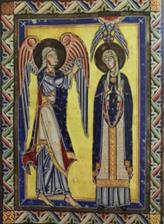
Figure 1: The Annunciation selected from the Gospel of Swabian, 1150
Figure 1, the painting from 12th century, is stiff and rigid like an Egyptian relief. The Virgin, who was facing the viewer, seemed to raise her hands in amazement, and the dove of the Holy Spirit descended from heaven onto her head. The angel beside the Virgin is a profile figure of him raising his right hand, a gesture in medieval art to indicate speech. For the expression of the Egyptian burial frescoes, the painter did not intend to make it vivid in the picture, but to express the various sacred symbols of the Annunciation, arranging in this picture in every detail. The background of the painting did not depict natural scenery, but was spread out in large, symbolic colors. These made the whole painting solemn but rigid. It was precisely because the culture and art of the medieval period are strictly restricted by the Holy See, which basically serve religion. The characters in the works are facialized and deified, uniform, have no secular emotions, and only have a basic educational role.
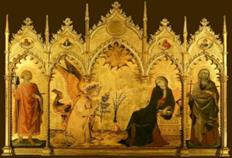
Figure 2: The Annunciation painted by Simone Martini & Lippo Memmi, 1333
As shown in Figure 2, this 14th century painting still has the same gold background as the figure 1, but the angel Gabriel is beginning to look more feminine, with an earnest expression, an olive branch of hope in her hand, and delicate feathers on her wings. Between the angel and the Virgin, a lily symbolizing purity is placed, and above it is a dove symbolizing the Holy Spirit. The Virgin, who had not yet read the red book in her hand, was frightened by the sudden visit of the angel, and leaned back slightly, her hand grasping the collar, and her face looked surprised.
Despite the same layout and subject matter, Martini's painting is noticeably more detailed and expressive. The shape is more smooth and delicate. The Virgin and the Angel also took a step toward humanity and the world though they are still planimetric.
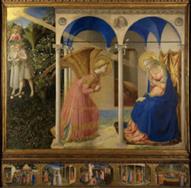
Figure 3: The Annunciation painted by Fra Angelico, 1426
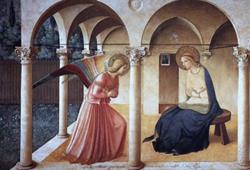
Figure 4: The Annunciation painted by Fra Angelico, 1440
In the 15th century, the Renaissance began. The painting of this period began to pay attention to the sense of space of painting, the depiction of the characters was more realistic, and the picture became smooth and soft. Painters also began to try to depict a three-dimensional sense of perspective. The paintings of this period are not as personalized as those of later generations, but they are more unique than the characteristics of the Middle Ages.
Both Figure 3 and Figure 4 are from Fra Angelico, an important painter during the early period of the Renaissance. The angel and the Virgin are almost the same, but as shown by Figure 3, it is clear that there still has the coldness of the gods that is more evident in medieval religious paintings. Despite this, there are still areas of Renaissance influence in the painting. For example, Figure 3 shows the Garden of Eden with Adam and Eve being driven out by the Angel yet also under the sway of the radiant messenger and pure maiden who are portrayed in the space of a Renaissance-style portico. Occasionally, he resorted to medieval techniques, such as a gold background, in deference to the taste of those who commissioned the work [3].
However, in figure 4, painted by Fra Angelico dozen of years later, he completely abandoned the original monotonous gold background and depicted the scene of life. Light and shade processing is very detailed, the use of colonnades to produce perspective effect, so that the picture is three-dimensional, the sense of space is obvious thus the whole scene is more real. Fra Angelico's color is simple and elegant, and the angels and the Virgin Mary also become simple, dressed in simple, affectionate and gentle, and behaved gracefully, which removes the cold and noble divinity and further humanizes them.
Even though the painting is by the same artist, painting the same subject matter, the picture will still take on different images over time.

Figure 5: The Annunciation painted by Jan Van Eyck, 1434-1436
Jan Van Eyck was one of the greatest painters of the early Niederland School of Painting, emphasizing the depiction of light and shadow, spatial relationships, and details. As described in the Jan van Eyck: The Play of Realism, “Realism in Van Eyck’s work is most often felt to have some proof value, value as evidence in helping to establish a historical fact or supporting religious doctrine.” [4]. Figure 5 just indicates this, using details to better convey the Annunciation itself. Having the same theme and main characters, Van Eyck’s painting depicts more details. For example, sentences around the Virgin and Gabriel, the depiction of decorations on clothing, character images on the carpet, light from the window and the angle which represent the holy spirit. All these details not only help support the story of the Annunciation but also makes the whole picture realistic, harmonious and beautiful. The prominent personal style sets the painting completely different from those previously.
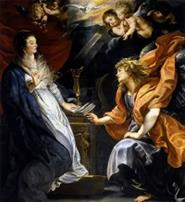
Figure 6: The Annunciation painted by Peter Paul Rubens, 1610
Under the influence of the Renaissance, art flourished in the 17th century. The art of this period is generally called the Baroque style. Its style can be attributed to: emphasizing movement and change, full of passion; emphasizing light to create a dramatic atmosphere. It was created when it was working for the Catholic Church and wealthy religious aristocrats.
Rubens is one of the most famous painters of the 17th century. From Figure 6, Maria is young and beautiful, wearing the beautiful clothes of a noble Flanders. Gabriel knelt in front of Mary, his eyes and posture led the audience to her, and Maria was a little surprised by his presence. The performance of the whole picture is more dramatic, and the golden light in the sky shows the existence of the Holy Spirit, and the all black background highlight the main figures, bringing the effect of the picture like a stage set.
In the 18th century, Rococo art emerged around Europe. Unlike the dark tones of the Baroque style, Rococo's colors are generally light and bright. The upper-class society and nobles in the figure paintings have replaced gods, depicting the hedonistic life of men and women in the upper-class society. Therefore, there are obviously fewer paintings with the theme of the Annunciation.

Figure 7: The Annunciation painted by Dante Gabriel Rossetti, 1849-1850
Rossetti is one of the important painters of the Pre-Raphaelite who believes that art before Raphael is sincere, while art after the heyday of the Renaissance is increasingly pursuing the perfection of appearances instead of paying attention to spiritual content. Therefore, they no longer only focus on contemporary themes, but also choose more themes that are often expressed in the Middle Ages and pay attention to the expression of their inner emotions. Therefore, many paintings with the theme of the Annunciation have emerged again during this period.
Dante's painting, about the Annunciation as shown in Figure 7, uses the white color symbolizing virginity as the theme color, which is contrary to the past Virgin Mary's paintings. At the same time, Dante did not draw wings for Gabriel, and his environment was more modern, showing the strong desire to use new perspectives to view this old story. The painter takes the dazzling white as the focus of the whole painting. The angels who came to report the news used to hold lilies to symbolize the blessing of heaven, and the white dove flying through the open window symbolizes the birth of Christ. The Virgin Mary in the painting curled up on the bed, looked frightened and haggard, and could only obey God's arrangement. Although the work is still based on religious stories, it is full of strong human feelings.
Through the analysis of the above paintings, it can be seen that although the paintings are of the same theme, many completely different pictures are presented under the hands of human painters. The change of times, the development of society, the change of environment, personal experience and the understanding of the subject matter of the Annunciation have all led to differences in those paintings.
Human art has been existed for centuries and still flourished now. It is just because that human art can reflect the emotions, thoughts, experiences and unique creativity of painters which can not be replaced by artificial intelligent art no matter how advanced it is. “Although the use of neural networks simulating human learning has come a long way in narrowing the gap between paintings produced by AI and those produced in the traditional fashion, there remains a fundamental difference in terms of aesthetic appreciation since paintings generated by AI are based on technology, while those produced by humans are based on emotion.” [5]. Saying like this, the answer to the question mentioned at the beginning is clear: Artificial Intelligence paintings can not replace human paintings.
However, according to Xinlu Liu, “Artificial intelligence painting and traditional painting form are interrelated and different, which are interdependent and complementary. Their existence provides a variety of visual aesthetic choices for human beings and meets the diversification of people's needs.” [6]. This means that artificial intelligence will not end but can shift to collaborate with traditional art, that is, human paintings, leading art to a new era. By combining these two together, painters can be more effective and also enable painters to explore more styles, techniques and ideas.
5.Conclusion
Human painters will draw unique paintings based on factors such as the background of the times, social environment, personal experience and different cultures. After all, AI is a rigid technology, which cannot be as vivid and emotional as human beings. Therefore, in the era of ai painting, which is popular and developing rapidly, human painting is still irreplaceable, and what ai painting should do is to assist and promote the development of art.
References
[1]. Colton, S., Halskov, J., Ventura, D., Gouldstone, I., & Blanca Pérez-Ferrer. (2015). The Painting Fool Sees! New Projects with the Automated Painter. International Conference on Computational Creativity.
[2]. Britannica, T. Editors of Encyclopaedia (2023, June 1). Annunciation. Encyclopedia Britannica. https://www.britannica.com/topic/Annunciation-Christianity
[3]. Spencer, J. R. (1955b). Spatial imagery of the annunciation in fifteenth century Florence. Art Bulletin, 37(4), 273–280. https://doi.org/10.1080/00043079.1955.11408315
[4]. Wood, C. S., Harbison, C., Upton, J. M., & Bedaux, J. B. (1993). Jan van Eyck: The Play of Realism. Art Bulletin, 75(1), 174. https://doi.org/10.2307/3045938
[5]. Sun, Y., Yang, C., Lyu, Y., & Lin, R. (2022). From Pigments to Pixels: A comparison of human and AI painting. Applied Sciences, 12(8), 3724. https://doi.org/10.3390/app12083724
[6]. Liu, X. (2020). Artistic reflection on artificial intelligence digital painting. Journal of Physics, 1648(3), 032125. https://doi.org/10.1088/1742-6596/1648/3/032125
Cite this article
Cui,J. (2024). The Annunciation in Art: Revealing the Irreplaceability of Art in the Age of Artificial Intelligence. Communications in Humanities Research,29,231-237.
Data availability
The datasets used and/or analyzed during the current study will be available from the authors upon reasonable request.
Disclaimer/Publisher's Note
The statements, opinions and data contained in all publications are solely those of the individual author(s) and contributor(s) and not of EWA Publishing and/or the editor(s). EWA Publishing and/or the editor(s) disclaim responsibility for any injury to people or property resulting from any ideas, methods, instructions or products referred to in the content.
About volume
Volume title: Proceedings of the International Conference on Global Politics and Socio-Humanities
© 2024 by the author(s). Licensee EWA Publishing, Oxford, UK. This article is an open access article distributed under the terms and
conditions of the Creative Commons Attribution (CC BY) license. Authors who
publish this series agree to the following terms:
1. Authors retain copyright and grant the series right of first publication with the work simultaneously licensed under a Creative Commons
Attribution License that allows others to share the work with an acknowledgment of the work's authorship and initial publication in this
series.
2. Authors are able to enter into separate, additional contractual arrangements for the non-exclusive distribution of the series's published
version of the work (e.g., post it to an institutional repository or publish it in a book), with an acknowledgment of its initial
publication in this series.
3. Authors are permitted and encouraged to post their work online (e.g., in institutional repositories or on their website) prior to and
during the submission process, as it can lead to productive exchanges, as well as earlier and greater citation of published work (See
Open access policy for details).
References
[1]. Colton, S., Halskov, J., Ventura, D., Gouldstone, I., & Blanca Pérez-Ferrer. (2015). The Painting Fool Sees! New Projects with the Automated Painter. International Conference on Computational Creativity.
[2]. Britannica, T. Editors of Encyclopaedia (2023, June 1). Annunciation. Encyclopedia Britannica. https://www.britannica.com/topic/Annunciation-Christianity
[3]. Spencer, J. R. (1955b). Spatial imagery of the annunciation in fifteenth century Florence. Art Bulletin, 37(4), 273–280. https://doi.org/10.1080/00043079.1955.11408315
[4]. Wood, C. S., Harbison, C., Upton, J. M., & Bedaux, J. B. (1993). Jan van Eyck: The Play of Realism. Art Bulletin, 75(1), 174. https://doi.org/10.2307/3045938
[5]. Sun, Y., Yang, C., Lyu, Y., & Lin, R. (2022). From Pigments to Pixels: A comparison of human and AI painting. Applied Sciences, 12(8), 3724. https://doi.org/10.3390/app12083724
[6]. Liu, X. (2020). Artistic reflection on artificial intelligence digital painting. Journal of Physics, 1648(3), 032125. https://doi.org/10.1088/1742-6596/1648/3/032125





